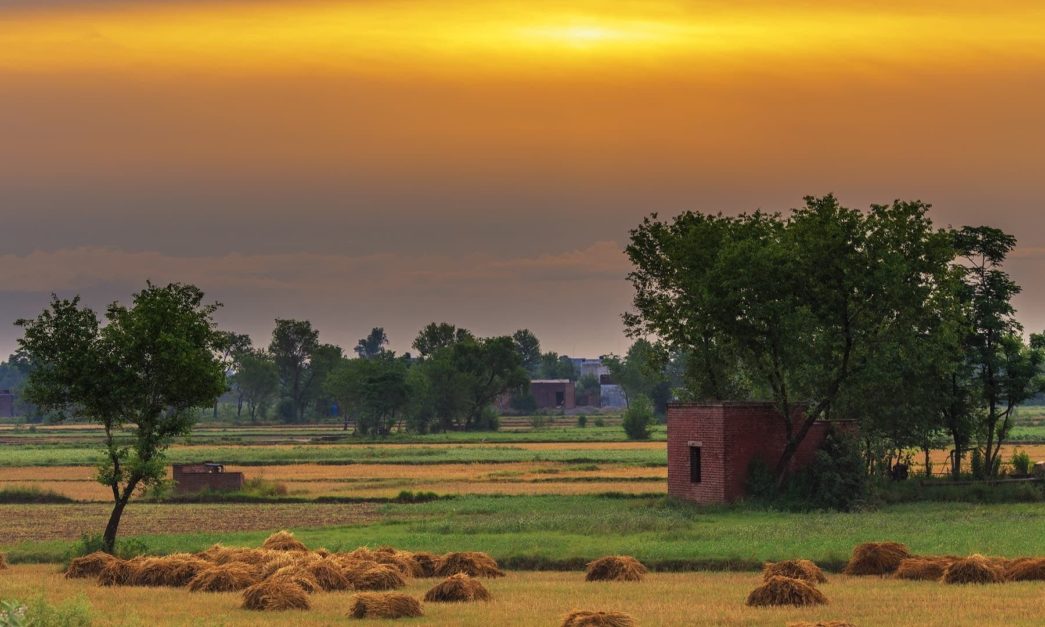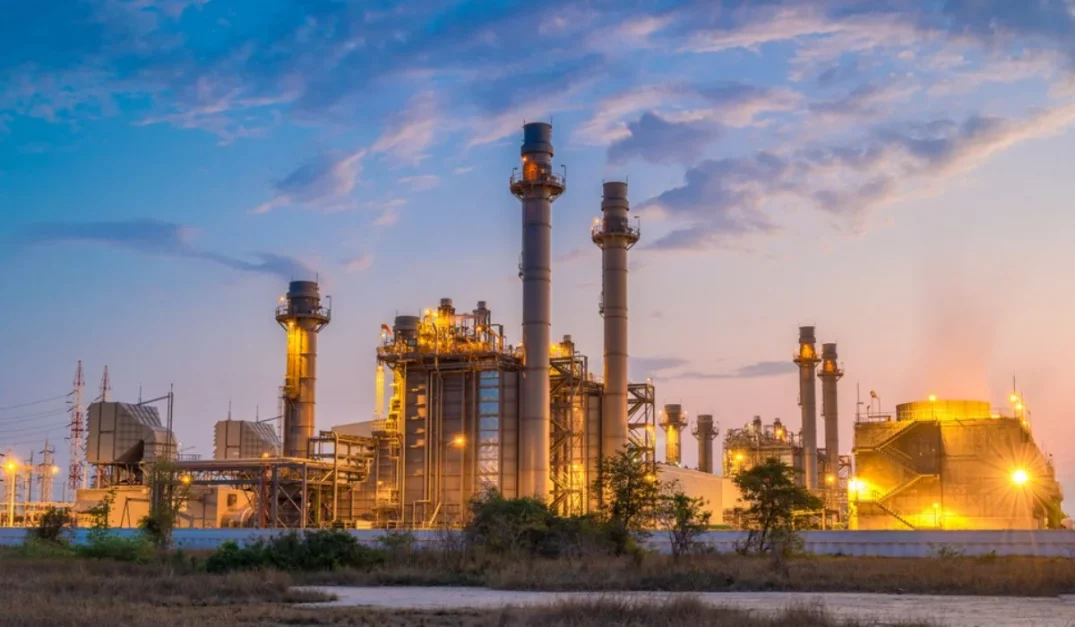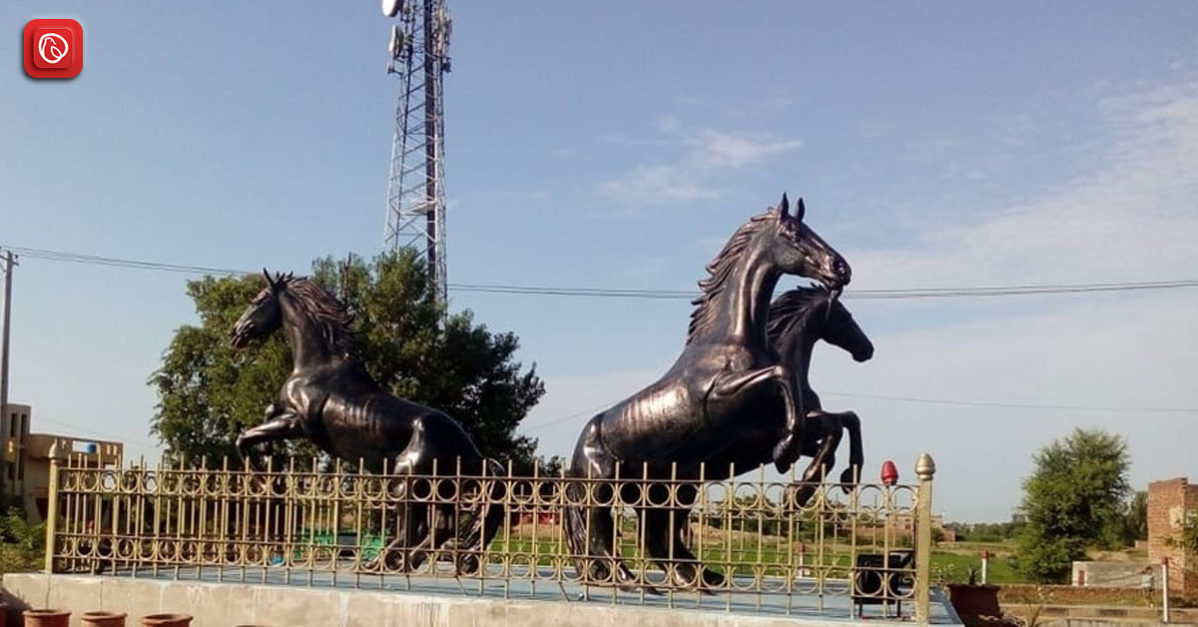The 31st largest city of Pakistan, Hafizabad is an ancient metropolis and capital of the Hafiz Abad District. Often hailed as the land of wisdom and rice, the city enjoys a prominent position in Punjab, Pakistan. Emperors have come and gone, yet the roots of Hafizabad have only grown deeper with time. The city has been around 2000 years, offering a wealth of cultural and historic treasures.
With this blog, Graana.com has drawn a sketch of Hafiz Abad emphasising on:
- Its location and geographical aspects
- Economic aspects
- Infrastructure
- History and evolution
- Cultural, traditional and artistic aspect
Hafizabad: Location and Geographical Aspects
Stretched over an area of 38.5 square kilometres, Hafizabad is located in Central Punjab.
Wedged Between (Borders)

- North and northwest: River Chenab
- East: Sheikhupura District and Gujranwala District
- North: Mandi Bahauddin District
- West: Sargodha District
- South: Faisalabad and Chiniot Districts
Distance from Capitals
- Federal Capital, Islamabad: 303 km
- Provincial Capital, Lahore: 109 km
Villages Nearby

- Sukheke Mandi
- Jalalpur Bhattian
- Vanike Tarar
- Kaleke Mandi
- Kot Hasan Khan
Hafizabad Neighbouring Cities
Here are some cities surrounding Hafizabad.
- Kaleke
- Gujranwala
- Sheikhupura
- Khangah
- Dorgan
- Rasulnagar
- Pindi Bhattian
- Wazirabad
Hafizabad: Economic Overview

For the most part, agriculture runs Hafizabad’s economy. However, there are additional activities that add to the city’s capital. Here is a table to showcase the Hafizabad income and its sources.
| Sources | Economic Percentage |
| Agriculture (and allied i.e fishing and livestock) | 36.3% |
| Construction | 31.1% |
| Community, Personal and Social Services | 10.7% |
| Retail/ Wholesale Trade (Restaurants and Hotels) | 8.5% |
| Manufacturing | 6.6% |
| Communication, Storage and Transport | 2.8% |
| Others | 3.1% |
Agriculture in Hafizabad Punjab

As part of the Agro-ecological plains of Pakistan, Hafizabad thrives on its agricultural sector. With about 36.5 percent of its population engaged in agricultural activities, this source forms the backbone of the city.
Here are some of the prominent produce of this sector.
Rice
Locals often refer to Hafizabad as the “city of rice” as it is the second largest producer and exporter of rice in Pakistan.
Diverse Crops
As a prominent contributor of agriculture in Pakistan, this city offers many other crops including:
- Wheat
- Tobacco
- Sugarcane
- Maize
- Grams
- Pulses
- Barley
- Linseed
- Sunflower
Fruit and Vegetables

Aside from the crops, Hafizabad offers ample supply of popular fruits and vegetables to the food industry in Pakistan. Here are some
| Fruits | Vegetables |
| Bananas | Onion |
| Mangoes | Bitter Gourd |
| Peaches | Cucumber |
| Guavas | Cabbage |
| Pomegranates | Green Peas |
Agriculture in Hafizabad is not just a means of livelihood but also a symbol of the region’s prosperity. The district’s diverse crop cultivation solidifies its position as a key player in Pakistan’s agricultural landscape.
Livestock

Livestock breeding is another essential economic activity in Hafizabad, with a significant population of
- Cattle
- Buffaloes
- Sheep
- Goats
- Poultry.
Indigenous breeds like Lohi sheep and Beetal goats are prevalent in the district, contributing to its livestock sector’s diversity and productivity. Additionally, Fishing and Beekeeping have also gained popularity in the region.
Markets in Hafizabad City
In Hafizabad City, two major markets stand out:
- The Grain Market
- Jalalpur Bhattian Grain Market.
These markets are crucial hubs for agricultural trade, especially for rice, making them significant contributors to the local economy. Farmers and traders flock to these markets for buying and selling grains, showcasing the agricultural richness of the region.
Moreover the markets play a pivotal role in connecting farmers with buyers. It ensures a steady flow of agricultural produce and sustains the livelihoods of many in the area.
Industrial and Manufacturing Sector

Hafizabad’s industrial landscape comprises a mix of small, medium, and large industrial units. There is a primary focus on rice milling, agricultural implements, flour mills, and industrial machinery.
The district is renowned for its high-quality rice, with about 10% of the country’s rice exports originating from Hafizabad. Despite the absence of an industrial estate, the district hosts 185 industrial units, highlighting its significance in the region’s industrial sector.
Infrastructure and Connectivity
Infrastructure plays a crucial role in the development and connectivity of a region. In the case of Hafizabad, the city boasts a well-established network of roads, railways, and telecommunication facilities, facilitating both local residents and businesses.
Road Network

Hafizabad is connected to neighbouring districts such as Gujranwala, Jhelum, and Mandi Bahauddin through a network of black-topped roads. The city is also linked to major cities like Jhelum, Mandi Bahauddin, Sargodha, and Gujranwala via the Pakistan Railway Network. Some prominent roads of Hafizabad include:
- Gujranwala-Hafiz Abad Road
- Gujranwala-Hafiz Abad-Pindi Bhattian Road
- Hafiz Abad-Sheikhupura Road
- Hafiz Abad-Pindi Bhattian Road
- Alipur-Hafizabad Road
Rail and Airways

Hafiz Abad is connected to Gujranwala and Faisalabad through the Hafizabad Railway Station. Additionally, there are a total of seven stations within this district. Moreover, there are no commercial or military airports in this town. However, there are two major airports of Pakistan nearby including:
- Allama Iqbal International Airport (Lahore) 91 kms away
- Faisalabad International Airport 116 kms away
Irrigation System

The agricultural activities in Hafizabad benefit significantly from the Lower Chenab Canal, originating from the Khanki Barrage. This canal, along with 35 minors and distributaries, ensures the irrigation of the district’s agricultural lands. Tube wells are also utilised to supplement the irrigation network.
Postal Services in Hafizabad
Postal services in Hafizabad district are efficient and reliable, with eight Pakistan Post offices serving the region. These offices ensure timely delivery of mail and courier services to residents and businesses in Hafizabad. Moreover, the postal code of Hafizabad city is 52110.
Development of Hafizabad Infrastructure

Since gaining district capital status in 1993, Hafizabad has seen considerable development. The city is only 22 kilometres away from the M2 motorway, following the construction of an interchange near Sukheke. A prominent signage at the entrance proudly proclaims, “Welcome to the Rice City of Pakistan,” highlighting Hafizabad’s significance in rice production in the country.
Healthcare and Education Facilities in Hafizabad
With the diverse range of well-known institutes, the city prioritises healthcare and education. The city offers government hospitals, dispensaries, basic health units, and a variety of educational institutes. With this advancement the town meets the needs of its residents.
Top Educational Institutes of Hafizabad
- Riphah International College
- Government Institute of Commerce
- Superior Group of Colleges
- Islamia Degree College for Women
- Punjab Group of Colleges
Top Healthcare Institutes of Hafizabad
- Abid Bhatti Hospital
- Yaseen Hospital
- Islam Memorial Hospital
- Wahla Family Hospital
Tourist Attractions At Hafizabad

Hafizabad offers several recreational areas and heritage sites for tourists. The banks of the River Chenab provide a picturesque setting for picnics and leisure activities. Head Sagar, a beautiful picnic spot where an irrigation canal passes over a link canal, is another popular destination.
The district is also home to several tombs and mosques, including
- Tomb of Hazrat Shah Sarmast Jalal ud Din Bokhari
- Tomb of Hazrat Marwan Shah
- Qadeem Jalali Mosque
This offers visitors a chance to explore the region’s rich architectural and religious history. Additionally, here are some places worth exploring:
- Hafizabad Fort
- Chiniot Fort
- Hafizabad Museum
- Waris Shah Museum
Saints and Famous Personalities of Hafizabad

Here are some pious saints of the city of rice.
- Hazrat Shah Sharmast Jilal U Din Bukhari
- Shah Buban Bukhari
- Marwan Shah
- Syed Niamat Ali Shah
- Sheikh Mosa Dud
Other Famous People
Here are some modern day famous people from Hafizabad.
Shaukat Ali Bhatti
Chaudhary Shaukat Ali Bhatti, a well known politician in the area. He was elected as a member of the National Assembly of Pakistan in 2018. Previously, he was elected in Provincial Assembly of Punjab from 2002 to 2007. He acted as the Provincial Minister for Culture and Youth Affairs.
Dulla Bhatti

Dulla Bhatti, also known as the “Robin Hood of Punjab” or “Son of Punjab”. He was a legendary figure in Punjab. He rose to prominence leading a rebellion against Mughal rule during the reign of King Akbar.
Despite being sparsely documented in historical records of the time, Dulla Bhatti’s existence is primarily known through Punjabi folk songs and accounts from Rajput Court and Sikh sources. He hailed from a Muslim Rajput background, with his father being a local zamindar. Dulla Bhatti resided in Pindi Bhattian, Punjab, and belonged to a lineage of hereditary rural chiefs within the zamindar class.
Falak Sher
Falak Sher is the former justice of the Supreme Court of Pakistan, who also served as the Chief Justice of the Lahore High Court. He started his judicial career as a judge of the Lahore High Court on March 11, 1987 ascending to the position of Chief Justice of LHC in July 14, 2000. Later on, in July 06, 2002, he was promoted to the role of Justice of the Supreme Court of Pakistan from his position as Chief Justice of the Lahore High Court.
History and Evolution of Hafiz Abad
Hafizabad’s history dates back to 327 BC when Alexander the Great crossed the River Chenab and passed through the Sandal Bar area, which now forms part of Hafizabad district. The famous Chinese explorer Hiuen-Tsang also visited the region in 630 AD, spending a night in a town called Jayapura, now a part of Hafizabad.
Mughal Era and Beyond

Little is known about Hafizabad’s history from the time of Hiuen-Tsang until the reign of the Mughal Emperor Akbar the Great. Sher Shah Suri ruled the area and constructed many roads, established mail posts, and constructed wells for drinking water and serais (small rest areas) along the road parallel to the River Chenab.
The area is mentioned in Ain-e-Akbari as the headquarters of a Mahal (district), with Hafiz, the city’s founder, being a favourite saint of Emperor Akbar. Legend has it that Akbar, while hunting, got lost and separated from his entourage. He met an old hermit who served him a glass of milk from a deer and guided him back.
Grateful, the Emperor asked the hermit for a wish, and the hermit asked for a town/village to be constructed where people could live and study with him. The Emperor ordered his advisor, Hafiz Meerak, to develop the area, which was completed between 1556 and 1570 and named Hafizabad after Akbar’s advisor.
Colonial Era and Independence

Hafizabad played a crucial role in the military strategies of Maharaja Ranjit Singh and the British Forces, who passed through the district to attack each other at Rasulnagar. The present Garhi Awan Mohallah of Hafizabad is the old Hafizabad city constructed on the ruins of Jayapura.
The town was inhabited by Hindus until Maharaja Ranjit Singh captured the area. The area was annexed into the British Raj in 1849, and a railway line was laid, adding Hafizabad Railway Station. During the British colonial period, Hafizabad was a tehsil of Gujranwala district.
Present-Day Hafizabad

Today, Hafizabad is a thriving district with a rich agricultural heritage. The main economic activities include agriculture, manufacturing, construction, and wholesale/retail trade. The district is known for its production of wheat, sugarcane, rice, and various fruits and vegetables.
Hafizabad’s architectural heritage includes the Small Fort in Hafizabad city, the Akbari Gate, Eid Gah Mosque, and the Gurdwara Chhatti Sikh Badshahi. These historical sites offer a glimpse into the region’s diverse cultural past.
Conclusion
Hafizabad is a district with a rich history and cultural heritage. From its ancient roots to its modern-day attractions, Hafizabad offers visitors a unique glimpse into the history and culture of Punjab, Pakistan. Whether exploring its historical sites or enjoying its natural beauty, Hafizabad is a destination that should not be missed.
Frequently Asked Questions
Here are some FAQs
Which languages are preferred in Hafizabad?
In Hafizabad, the preferred languages are Urdu and Punjabi. Urdu is the official language of Pakistan and is widely spoken and understood, while Punjabi is the most commonly spoken language in the region.
Why is Hafizabad popular?
Hafizabad is popular for its thriving agricultural industry, particularly its rice production. The district is known for its high-quality rice, earning it the reputation of being a major rice-exporting region in Pakistan.
Name top 3 schools in Hafizaabad?
Some of the top schools in Hafizabad include:
- Government Muslim High School
- The Educators Hafizabad Campus
- Govt. High School, Jalalpur Bhattian
What types of handicrafts are prominent in Hafizabad district?
Major handicrafts in Hafizabad district include products from
- Cotton power-looms
- Embroidered items (both on cloth and leather)
- Leather Shoes and Other goods
- Hand-knotted carpets
How does Hafiz Abad make money?
Hafizabad generates income primarily through agriculture, particularly rice production, which is a major source of revenue for the district. The district also earns income from industries such as manufacturing, construction, and trade, contributing to its economic prosperity.
Which rice is called the king of rice?
Basmati rice is often referred to as the “king of rice” due to its unique aroma and long, slender grains. Basmati rice is renowned for its superior quality and is widely considered one of the best varieties of rice in the world.
Is Hafiz Abad a village or a City?
Hafizabad is a city located in the Punjab province of Pakistan. It serves as the headquarters of Hafizabad District and is an important urban centre in the region.
Which province entails Hafiz Abad?
Hafizabad city is within Punjab province Pakistan.
What kind of rice Hafiz Abad exports?
Known as “the City of Rice” Hafiz Abad exports these types of rice:
- Basmati 386
- Basmati 385
- Ert Nine
- Ery Six
- Super Fan
- Super Karnal
- KS 282
What is Hafizabad Postal Code?
The zipcode for Hafiz Abad is 52110
How many prisoners can District Jail Hafizabad hold?
Commissioned in 2016, the District Jail Hafizabad can accommodate up to 1000 prisoners.
Which river is close to Hafiz Abad, Punjab?
The city of Hafiz Abad is set to River Chenab’s east.
How many tehsils are there in Hafizabad?
There are two tehsils in Hafizabad:
- Pindi Bhattian
- Faizabad
How is Hafizabad related to Hafiz Mustafa Bukhari?
According to legend, the Mughal Emperor Akbar named the city of Hafizabad after a saint named Hafiz Mustafa Bukhari. There are two versions of this story, both of which recount how the king was impressed by the sage’s hospitality and wished to express his gratitude.
Did the British divide Central Punjab into agricultural bars?
Yes, the Central Punjab had five agricultural bars during the British Raj entailing:
- Sandal Bar (between the Ravi and Chenab Rivers)
- Kirana Bar (between the western side of Chenab and the eastern side of Jhelum River)
- Neeli Bar (between the populated area and the wild forest of the rivers Ravi and Sutlej)
- Ganji Bar (between Sutlej and the dry river bed of Ravi)
- Gondal Bar (between Jhelum and Chenab Rivers).
What is the location and significance of Sandal Bar?
Located within present-day Hafizabad, the Sandal Bar, was one of the agricultural bars in Central Punjab during the British Raj. Wedged between the Ravi River and Chenab River, the area was well-populated. With a canal irrigation system, the region contributed significantly to its agricultural development and productivity.
How did the canal irrigation system impact Sandal Bar’s development?
Sandal Bar (now Hafizabad) benefitted from canal irrigation in many ways. Here are some:
- The region became fertile
- Population grew as settlers made their way to this area
- Settlers enjoyed a consistent supply of water for agriculture and life.
- Overall the area developed into a thriving community
Read about South Punjab Cities, at Graana Blog.




